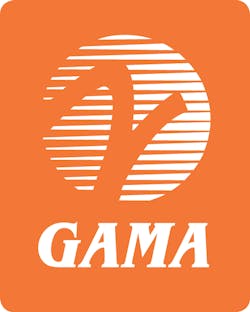Mission: Find a Solution to Workforce Shortage
Education and training are the foundation for a successful future, and most of us wouldn’t be where we are today without them – I know I sure wouldn’t. With the latest Boeing Pilot & Technician Outlook report showing our industry needs 790,000 new commercial airline pilots, 754,000 new maintenance technicians, and 890,000 new cabin crew to fly and maintain the world fleet over the next 20 years, it’s clear our industry needs to make workforce development a higher priority. We need to expose young people to the exciting and rewarding careers that await them in the aerospace industry and ensure they have the education and training they need to succeed.
GAMA is proud to be a part of finding a solution to this looming workforce shortage. Our efforts include providing scholarships to high school students enrolled in an aviation degree core program at a university or college, hosting an internship database on the GAMA website, teaching young girls and women about our industry and career paths at events like Women in Aviation International’s Girls Days, hosting rallies and round tables to promote careers in the industry and hosting an annual competition to promote STEM education through aviation curriculum in U.S. high schools. If you’re an avid reader of AMT, you already know about the GAMA Aviation Design Challenge, which we started in 2013 to help increase the number of young people entering the general aviation field. Since establishing the Challenge, GAMA has reached nearly 1,900 students in over 400 high schools spanning 43 states and Washington, D.C. Each year, the winning team receives a firsthand general aviation manufacturing experience. This hands-on experience working side-by-side with experts is phenomenal and life-changing for some of them. For those students that compete but do not win, the aerospace STEM education and exposure to aviation alone is tremendous. It has inspired many students to get involved in aviation or pursue a college degree and/or career path in the aviation industry, and it’s even interested several teachers to attain their pilot’s license or make aviation a permanent part of their school’s curriculum.
In addition to our efforts, the U.S. Congress is helping create pipelines for future aviation industry workers through several pieces of legislation that GAMA supports. This includes the “Aviation Maintenance Workforce Development Pilot Program,” sponsored by U.S. Senators Inhofe (R-OK), Moran (R-KS), Blumenthal (D-CT), and Cantwell (D-WA) introduced in early March this year; The Promoting Women in the Aviation Workforce Act of 2017, introduced by U.S. Senators Susan Collins (R-ME) and Tammy Duckworth (D-IL), and in the U.S. House by Representatives Elizabeth Esty (D-CT) and Jackie Walorski (R-IN); and The Women in Aerospace Act, introduced by Representative Steve Knight (R-CA).
On the regulatory and policy side, the U.S. Federal Aviation Administration (FAA) is working to make more efficient and modernize certification standards for pilots and mechanics. The agency is working to replace Aviation Mechanic General, Airframe, and Powerplant Practical Test Standards (PTS) with a single Aviation Maintenance Technician (AMT) Airman Certification Standard (ACS) document. As a part of this process, the FAA recently solicited feedback from industry regarding the consolidation and to provide recommendations for improvements to the ACS to ensure the AMT is provided with a practical and current basis to demonstrate their level of competency and workmanship. GAMA submitted formal comments that requested the ACS include and strengthen areas related to aircraft system software and hardware security, hybrid and electric propulsion ground operations and servicing considerations, guidance on inspections of additively manufactured parts, and the use of innovative inspection concepts and techniques to include remote connectivity technology and tools.
As we all know, a career in aviation provides endless opportunities, longevity and joy. Our workforce is the core of this incredible industry, and we need to continue building on the broad support our industry has at the local, state, and federal levels of the government and expanding the reach of our pipeline programs to secure its bright future.
About the Author

Pete Bunce
Pete Bunce is the president and CEO of GAMA, an international trade association representing more than 100 of the world’s leading manufacturers of general aviation airplanes and rotorcraft, engines, avionics, components and related services. GAMA’s members also operate repair stations, fixed based operations, pilot and maintenance training facilities and they manage fleets of aircraft. You can read more about GAMA’s activities on our Web site at www.gama.aero and on our Facebook page at https://www.facebook.com/#!/General.Aviation.Manufacturers.Association.
